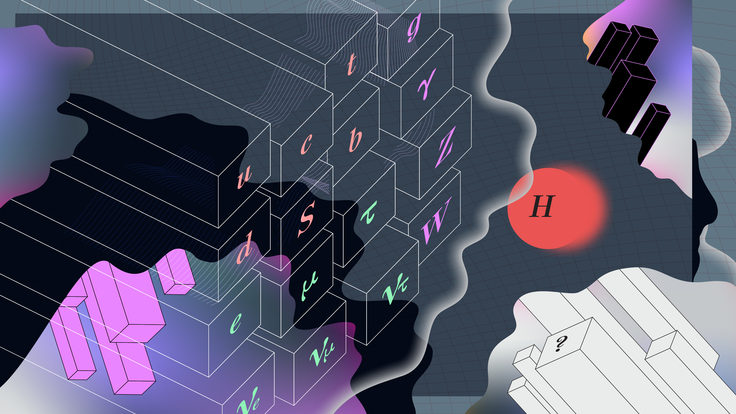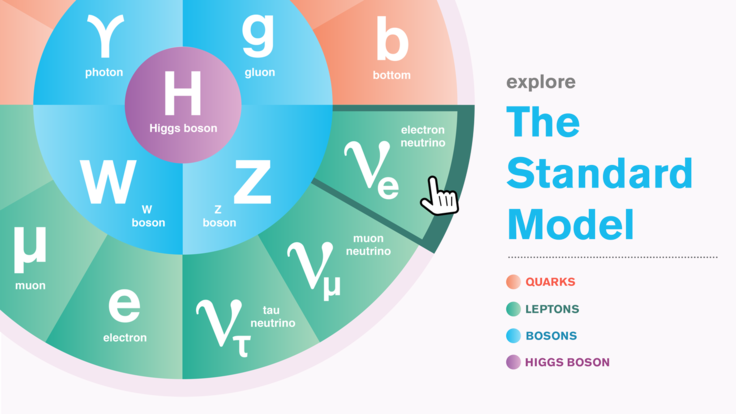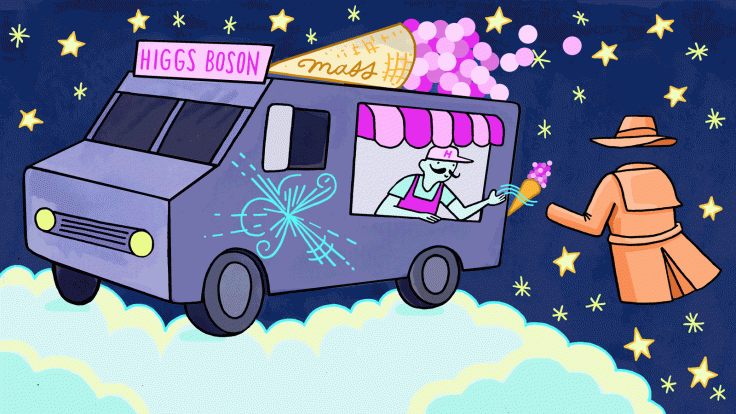Community + laboratory
Fermilab has joined up with local residents to think about the best ways for the lab to serve not only science, but also the surrounding area.
By Tona Kunz
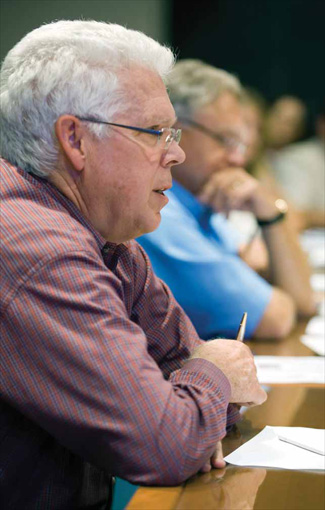 |
| Thomas Van Cleave brings multiple perspectives to the group as a county board member and a resident of a neighborhood across the road from Fermilab. Photos: Reidar Hahn, Fermilab |
When planning a project a decade ago, Fermilab told its neighbors they might want to prepare for a little construction noise. In retrospect, that wasnt the greatest decision, even though the project took place entirely within the laboratorys boundaries.
For one thing, the heads-up to local residents didnt come until the laboratory had already signed contracts to blast thousands of tons of rock and dirt into the air for a tunnel to house a neutrino detector.
For another, Fermilab had announced that the blasting would sound to neighbors like distant thunder. Actually, in certain weather conditions it sounded like a semi-truck driving through their living rooms. Blasts rattled windows and had neighbors fearing for the safety of their homes foundations.
Although, ultimately, homes suffered no damage and the blasting eventually ended, the experience had shaken Fermilabs credibility and good community relations.
Former project manager and Fermilab Associate Director for Research Greg Bock remembers, When we finally met with the neighbors it was a good interaction, but it was a little late in the game.
The laboratory doesnt plan to make that mistake again.
In 2004, Fermilab convened a task force of local residents to advise on how theyd like to interact with the laboratory when issues arise that affect both the community and Fermilab. Neighbors said they wanted an earlier heads-up on large projects and a much closer working relationship with the laboratory on a wide range of community-related issues. Fermilab listened.
The laboratory asked friends and former foes from more than half a dozen nearby towns to join task forces to review plans for future projects, make recommendations for laboratory planning and decision- making, and serve as community liaisons. By mid-2010, Fermilabs third task force was just warming up.
Im all for lack of conflict
Late one evening in June, Bock once again found himself explaining a possible on-site tunnel dig to neighbors. Only this time construction wouldnt start for three to four years and neighbors would have ample opportunity to weigh in on the process. And we think we will really benefit from that, Bock said.
The 24 advisory board members around the table ranged in age from late teens to retirees and captured the multi-ethnic nature of the area, as well as the mix of blue- and white-collar workers, stay-at-home parents, educators, and local officials. They offered the viewpoints of not-in-my-backyard activists, small-town politicians, retirees, young professionals, educators, environmentalists, and business owners.
In the years since Fermilab has embraced public participation, these local task forces have vigorously debated a wide range of issues and allowed Fermilab to incorporate community perspectives into planning and operations.
Im all for lack of conflict, said Elaine McCluskey, grinning as the group peppered her with a list of questions she should prepare to address. Shes project manager for the Long Baseline Neutrino Experiment. The LBNE project will require a new tunnel whose construction will take place even closer to an adjacent neighborhood than the previous tunnel. It will also require new buildings visible from adjacent neighborhoods.
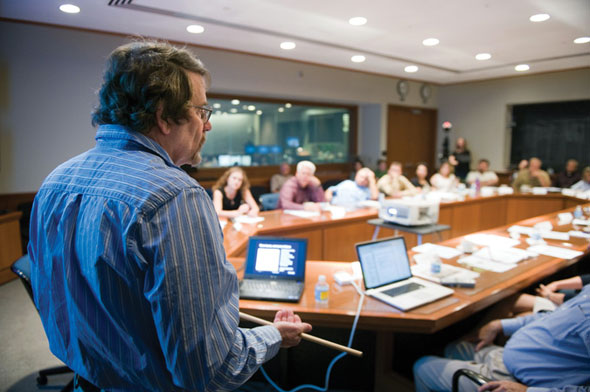 |
| Fermilab physicist Rob Plunkett explains safety precautions planned for an upgrade of the neutrino beam that runs from Fermilab to the NOνA experiment in Minnesota. |
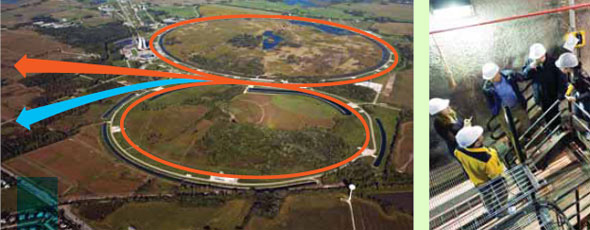 |
| Left: An overview of Fermilabs accelerator complex shows the routes taken by an existing neutrino beam to the NOνA experiment in Minnesota (orange) and by a proposed neutrino beam to the LBNE experiment in South Dakota (blue). Right: Board members visit the NuMI tunnel, where neutrinos rush through, unnoticed, on their way to Minnesota. |
The idea behind the community task forces is to hear and address hard-hitting questions and concerns now, while change is physically and financially possible, rather than waiting until neighbors fill the letter-to-the-editor sections of newspapers and light up the Fermilab switchboard with irate calls.
Decisions that get made in the conceptual phase will affect how things move along, says task force facilitator Doug Sarno.
Using a short on-site tunnel, LBNE will shoot a beam of harmless neutrino particles through the earth for a distance of more than 1000 kilometers to the worlds largest particle detectors, likely housed in a proposed underground laboratory in Lead, South Dakota. The project will assure Fermilabs place as a world leader in neutrino research and is the first of several construction projects the laboratory plans for the next decade. The task force will learn about and contribute to all of these projects in their early planning phases and provide ongoing feedback during design and construction.
Involving neighbors in project planning early in the design phase was a recommendation of the first public participation group six years ago. Deciding exactly when and how the task force and the laboratory should share that information with the wider community remains an ongoing debate, with everyone agreeing to err on the side of sooner rather than later.
Timing is critical, says task force member Joe Suchecki. If you wait too late, residents feel left out. He pointed to an instance in which managers of an area forest preserve brought completed design plans before residents for comment. The residents said Well, why are we here if this isnt going to change? Suchecki recalls.
In return for giving up evenings with their families, the task force members gain the rare opportunity for meaningful participation in Big Science. They gain a voice in a scientific enterprise that is an economic engine for the Illinois area, a key element in US competitiveness, and a partner in the global search for knowledge of the fundamental physics of the universe.
Some members joined the task force not knowing a quark from a quack, but wanting to make sure development fits with community standards. Others love science and saw a chance to learn more about a rapidly changing field of physics. Some were drawn by the economic impact of the laboratory, or by the need to protect their property values. Still others toured the laboratory as children and wanted to make sure it maintains a sustainable path.
They all have questions: Why do you have to do this here? How will your plans affect my quality of life? Why is this a good investment for US taxpayers?
And they want facts to back up those answers. A response from a scientist that Fermilab had weighed costs for different tunneling methods to minimize construction length and noise brought nods of approval. But it also brought the comment that the public would want to see the facts and figures that went into that decision, not just hear the final choice.
The discussion highlighted a new attitude toward science. Gone are the Cold War days when the public deferred to scientists views and plans without significant scrutiny. Today they wanted to peer into the process and judge for themselves the value of everything from particle-physics construction plans to climate-change studies.
Task force member Tim Klaus brought home the point while discussing the groups tour of the labs MINOS experiment tunnel, which illustrates the type of construction LBNE will require on the Fermilab site.
When you were talking about making sure the water goes back into the tunnel and not into the groundwater, the first thing that popped into my head is: That is probably what BP said. So just be prepared for people to not take you at face value and to want transparency, he said.
To lie dormant for three to four years would be wrong
Municipalities often create community task forces to solicit input for school and park developments, and government zoning changes require early oversight on myriad projects. Similarly, in the rarefied world of large high-energy-physics laboratories, public participation is gaining ground.
Switzerland-based CERN holds informational meetings with French and Swiss elected officials and townspeople who live along its 27-kilometer accelerator ring.
When Japans KEK laboratory had to tear down a forest to construct a new physics research campus, it invited residents to join in planting replacement trees. Japan also started a campaign to establish a science culture in Tsukuba, the town nearest the laboratory, in part to increase the cosmopolitan nature of the area to attract foreign physicists.
In Germany, preparation for the TESLA project at DESY entailed communicating with neighbors in 15 communities about six years in advance of the expected formal project approval. A TESLA research campus would have occupied the center of Ellerhoop, and the small towns residents were wary. But through strong communication, they grew to embrace the plan, and were disappointed when the TESLA project was scrapped in 2003 for a different project, the European X-ray Laser Project XFEL. The quick shift left DESY staff with little time to consult with XFEL neighbors. The result was pickets and protests.
However, all those efforts involved specific projects or experiments that would extend beyond laboratory boundaries and thus require cooperation or oversight from local governments. Fermilabs future plans fit within the laboratorys boundaries and within state and local regulations, yet the laboratory still solicits community input.
Fermilab also wants to hear from task force members about more than brick-and-mortar concerns. Task force members look at the big-picture question of the appropriate role for the United States in international high-energy physics and at Fermilabs role as the nations only national laboratory devoted entirely to that field. Such science-policy questions affect the daily lives of those living near the laboratory in ways that they and scientists are working to understand.
We are really seeking advice on how to proceed so that each aspect will be successful for the lab and everyone around it, Sarno says.
Fermilab hopes to avoid the kind of disconnect that occurs when laboratories focus only on one-way outreach and try to deduce the temperament of the community from limited comments by science minded attendees at open houses and science education events. Scientists and non-scientists tend to view the world through different prisms of experience, just as parents and non-parents do, or country and city dwellers.
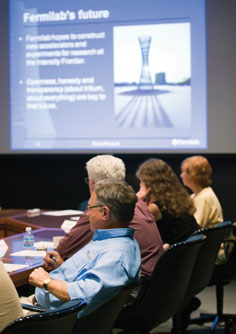 |
| The board gets briefed on proposed future experiments. |
When scientists told the Fermilab task force during a July meeting that they thought the community was well aware of the science Fermilab does and the fact that it has a vibrant portfolio of research plans, they were met with a resounding No from members.
The overriding impression I get from people is that they think the lab is almost closed, said task force member Mike Herlihy. To lie dormant for three to four years would be wrong. You need to communicate that there is interest in the lab and its science, that there are plenty of things to discover, and that the lab is viable. That will make all future conversations easier, he added.
Later, a flurry of horizontal head shaking followed a physicists comment that neighbors could wait for answers to questions about LBNE, as they had with an earlier Fermilab neutrino experiment, until publication of the required environmental documentation for the project.
Through the lens of bureaucratic procedure and vetted research, physicists see these documents as offering the most accurate answers. Until all the data is in, earlier answers would be speculative and, at worst, wrong.
But through the lens of a non-scientist who watched the Katrina and BP emergency responses on TV, waiting seems suspicious; they want to be part of watching the answers evolve.
As a resident I would not want to wait for that environmental assessment and then be like Oh my god, said Herlihy, whose role as a city councilman has exposed him to residents complaining about a lack of government transparency and foresight.
This time, Fermilab wont be keeping the neighbors waiting.
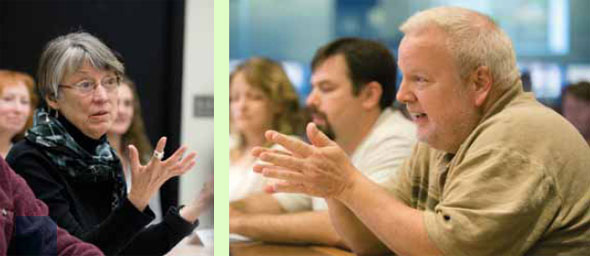 |
| Board members Mollie Millen, a county plan commissioner, and John Fildes, a Batavia resident, discuss community views of Fermilabs science. |
Click here to download the pdf version of this article.




